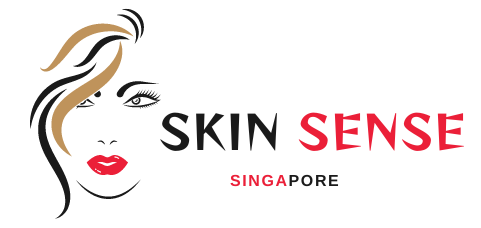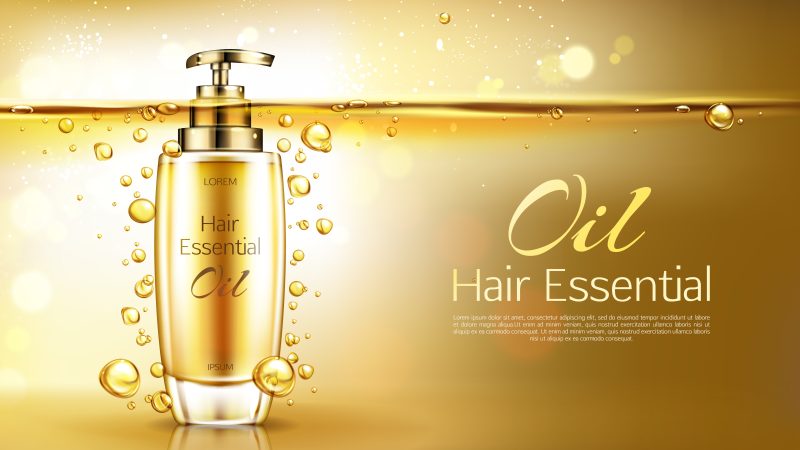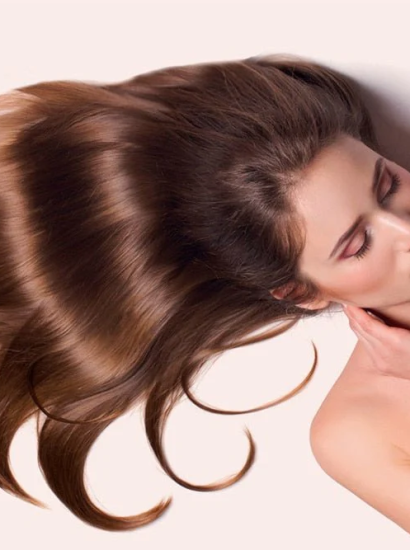Hair oiling is a time-honored tradition in many cultures, renowned for its numerous benefits. Whether you’re looking to boost hair growth, add shine, or simply keep your scalp healthy, hair oil can be a game-changer. This comprehensive guide will walk you through everything you need to know about hair oil, from its benefits to how to use it effectively.
1. What is Hair Oil?
- Hair oil is a nourishing product used to moisturize the scalp and hair, improve hair health, and promote growth. It can be derived from a variety of natural sources, such as plants, nuts, and seeds, each offering unique benefits depending on the oil used. Common types of hair oils include coconut oil, argan oil, jojoba oil, and castor oil.
- Hair oils can be categorized into two main types: carrier oils and essential oils. Carrier oils, such as coconut, almond, and olive oils, are used in larger quantities and form the base of hair treatments. Essential oils, like lavender, tea tree, and rosemary oils, are potent and typically used in smaller amounts, often mixed with carrier oils for added benefits.
2. The History of Hair Oiling
- The practice of hair oiling dates back centuries and is rooted in various cultural traditions. In India, hair oiling is a key part of Ayurvedic medicine, believed to strengthen hair and enhance its natural beauty. This ancient practice involves the use of herbal oils to nourish the scalp and hair, often combined with a head massage to improve blood circulation and relax the mind.
- In Mediterranean cultures, olive oil has been used for generations to maintain healthy hair. The ancient Greeks and Romans valued olive oil not only for its culinary uses but also for its ability to moisturize and protect hair and skin. Similarly, in the Middle East, women have long used argan oil, derived from the kernels of the argan tree, to keep their hair shiny and healthy.
3. Key Benefits of Hair Oil
- Hair oil offers a wide range of benefits that can transform your hair care routine:
- Moisturizes and Conditions: Hair oil penetrates the hair shaft and scalp, providing deep hydration and conditioning. This helps to reduce dryness, frizz, and split ends, leaving hair smoother and more manageable.
- Strengthens Hair: Regular oiling can strengthen hair from the roots, reducing breakage and split ends. The vitamins and fatty acids in hair oils help to nourish the hair follicles, promoting stronger and healthier hair growth.
- Promotes Hair Growth: Certain oils, like castor oil, are known to stimulate hair growth by improving blood circulation to the scalp. This enhanced circulation ensures that hair follicles receive the necessary nutrients and oxygen to support growth.
- Adds Shine: Hair oil can give your hair a natural shine and softness, making it look healthy and vibrant. Oils coat the hair shaft, smoothing the cuticle and reflecting light for a glossy finish.
- Reduces Dandruff: Oils with antimicrobial properties, such as tea tree oil, can help combat dandruff and keep the scalp clean. These oils help to reduce flakiness and itching, promoting a healthier scalp environment.
- Protects Against Damage: Oils can create a protective barrier around the hair, shielding it from environmental damage and styling tools. This barrier helps to prevent moisture loss and protect hair from the harmful effects of UV rays, pollution, and heat styling.
4. Types of Hair Oils and Their Benefits
- Different hair oils offer distinct benefits. Here’s a closer look at some popular options:
- Coconut Oil: Excellent for deep conditioning, coconut oil penetrates the hair shaft to moisturize and strengthen. It also has antifungal properties that help combat dandruff. Coconut oil is rich in lauric acid, which has a high affinity for hair proteins, allowing it to penetrate deeply and prevent protein loss.
- Argan Oil: Known as “liquid gold,” argan oil is rich in antioxidants, vitamins, and essential fatty acids, making it perfect for nourishing and softening hair. It helps to repair damaged hair, reduce frizz, and add shine. Argan oil is also lightweight, making it suitable for all hair types.
- Jojoba Oil: Similar to the natural oils produced by the scalp, jojoba oil is great for balancing oil production and adding moisture without making the hair greasy. It is rich in vitamins E and B, as well as minerals like zinc and copper, which help to nourish the scalp and promote healthy hair growth.
- Castor Oil: With its thick consistency, castor oil is highly effective at promoting hair growth and thickening hair. It contains ricinoleic acid, which has anti-inflammatory and antimicrobial properties, helping to maintain a healthy scalp and encourage hair growth.
- Olive Oil: Rich in vitamins A and E, olive oil provides deep conditioning and protects hair from environmental damage. It also contains oleic acid, which helps to lock in moisture and prevent hair from becoming dry and brittle.
- Tea Tree Oil: Known for its antimicrobial properties, tea tree oil helps maintain a healthy scalp and reduces dandruff. It also has anti-inflammatory properties that can soothe an irritated scalp and promote overall scalp health.
5. How to Choose the Right Hair Oil for Your Hair Type
- Selecting the right hair oil depends on your hair type and specific needs:
- Dry Hair: Look for deeply moisturizing oils like coconut, olive, or argan oil. These oils help to hydrate and nourish dry, brittle hair, restoring moisture and preventing further damage.
- Oily Hair: Lighter oils like jojoba or grapeseed oil are ideal as they balance natural oil production without weighing hair down. These oils help to regulate sebum production, keeping the scalp and hair balanced.
- Curly Hair: Rich, thick oils like castor oil can help define curls and reduce frizz. These oils provide the necessary moisture and nourishment to maintain healthy, bouncy curls.
- Fine Hair: Light oils like almond or jojoba oil provide moisture without making hair feel heavy or greasy. These oils are easily absorbed and won’t weigh down fine, delicate hair.
6. How to Apply Hair Oil Correctly
- Proper application of hair oil is crucial to reap its benefits. Here’s a step-by-step guide:
- 1. Choose Your Oil: Select an oil that suits your hair type and needs. Consider factors like your hair’s porosity, texture, and specific concerns (e.g., dryness, dandruff, or hair loss).
- 2. Warm the Oil: Slightly warm the oil to enhance penetration. Be careful not to overheat it. You can warm the oil by placing the bottle in a bowl of hot water or microwaving it for a few seconds.
- 3. Section Your Hair: Divide your hair into manageable sections to ensure even application. This will help you apply the oil more evenly and avoid missing any areas.
- 4. Massage the Scalp: Apply the oil to your scalp and massage gently for 5-10 minutes to stimulate blood circulation. Use your fingertips to make circular motions, ensuring that the oil is evenly distributed.
- 5. Distribute Through Hair: Use a wide-tooth comb to distribute the oil evenly from roots to ends. This will help to coat each strand with the oil and ensure even coverage.
- 6. Leave It In: Leave the oil in for at least 30 minutes or overnight for deeper conditioning. You can wrap your hair in a warm towel or cover it with a shower cap to enhance absorption.
- 7. Wash Out: Shampoo and condition your hair as usual to remove excess oil. Use a gentle, sulfate-free shampoo to avoid stripping your hair of its natural oils.
7. How Often Should You Oil Your Hair?
- The frequency of hair oiling depends on your hair type and needs:
- Dry Hair: Oiling 2-3 times a week can help maintain moisture levels and prevent dryness. Regular oiling helps to replenish lost moisture and keep hair hydrated.
- Oily Hair: Oiling once a week is sufficient to balance oil production. Over-oiling can exacerbate oiliness, so it’s important to use oil sparingly and choose lightweight options.
- Normal Hair: Oiling once or twice a week can keep hair healthy and nourished. This frequency helps to maintain a balanced scalp and provide essential nutrients to the hair.
8. DIY Hair Oil Recipes
- Creating your own hair oil blends can be a fun and personalized way to care for your hair. Here are a few DIY recipes:
- Moisturizing Coconut Oil Blend: Mix equal parts of coconut oil and olive oil for a deeply hydrating treatment. This blend is ideal for dry, damaged hair and can be used as a weekly deep conditioning treatment.
- Growth-Boosting Castor Oil Blend: Combine castor oil with a few drops of peppermint oil to stimulate hair growth. Peppermint oil has a cooling effect that helps to improve blood circulation and promote hair growth.
- Shine-Enhancing Argan Oil Blend: Mix argan oil with a few drops of lavender oil for added shine and a pleasant scent. Lavender oil also has soothing properties that can help to calm an irritated scalp.
9. Common Myths About Hair Oil
- There are several misconceptions about hair oil that need to be addressed:
- Myth: Oiling makes hair greasy. Fact: When used correctly, hair oil provides moisture without making hair greasy. The key is to use the right amount of oil for your hair type and to wash it out properly.
- Myth: Oiling causes hair fall. Fact: Proper oiling strengthens hair and can reduce hair fall. Hair loss can occur if oil is not washed out properly, leading to clogged follicles and scalp issues.
- Myth: Oiling makes hair greasy. Fact: When used correctly, hair oil provides moisture without making hair greasy. The key is to use the right amount of oil for your hair type and to wash it out properly.
- Myth: Oiling causes hair fall. Fact: Proper oiling strengthens hair and can reduce hair fall. Hair loss can occur if oil is not washed out properly, leading to clogged follicles and scalp issues.
- Myth: Only dry hair needs oiling. Fact
- All hair types can benefit from oiling. The right oil and frequency of use can enhance the health and appearance of any hair type.
10. Conclusion
Hair oiling is a simple yet powerful way to maintain healthy, beautiful hair. By understanding the benefits and choosing the right oil for your hair type, you can transform your hair care routine. Whether you’re aiming for stronger, shinier hair or a healthier scalp, incorporating hair oil into your regimen can yield remarkable results. Embrace the tradition of hair oiling and discover the transformative effects it can have on your hair’s health and appearance.
FAQs
1. Can I leave hair oil in overnight?
Yes, leaving hair oil in overnight allows for deeper penetration and conditioning. However, ensure you cover your hair with a shower cap or towel to protect your bedding.
2. How much oil should I use?
The amount of oil depends on your hair length and thickness. Generally, 1-2 tablespoons are sufficient for medium-length hair. Adjust the amount based on your hair’s needs.
3. Can I use hair oil on colored hair?
Yes, but choose oils that are safe for color-treated hair, like argan oil or jojoba oil. These oils help to maintain moisture and protect the color without causing fading.
4. Is it necessary to wash out hair oil?
Yes, washing out hair oil ensures that your scalp and hair remain clean and free from excess buildup. Use a gentle shampoo to cleanse your hair without stripping away its natural oils.
5. Can I mix different oils together?
Absolutely! Mixing oils can combine their benefits. Just ensure the oils complement each other and suit your hair type. Experiment with different blends to find what works best for you.
Also read : DAYLIGHT CREAM: 10 HIGH-IMPACT CHOICES FOR EFFORTLESS DAYTIME RADIANCE





